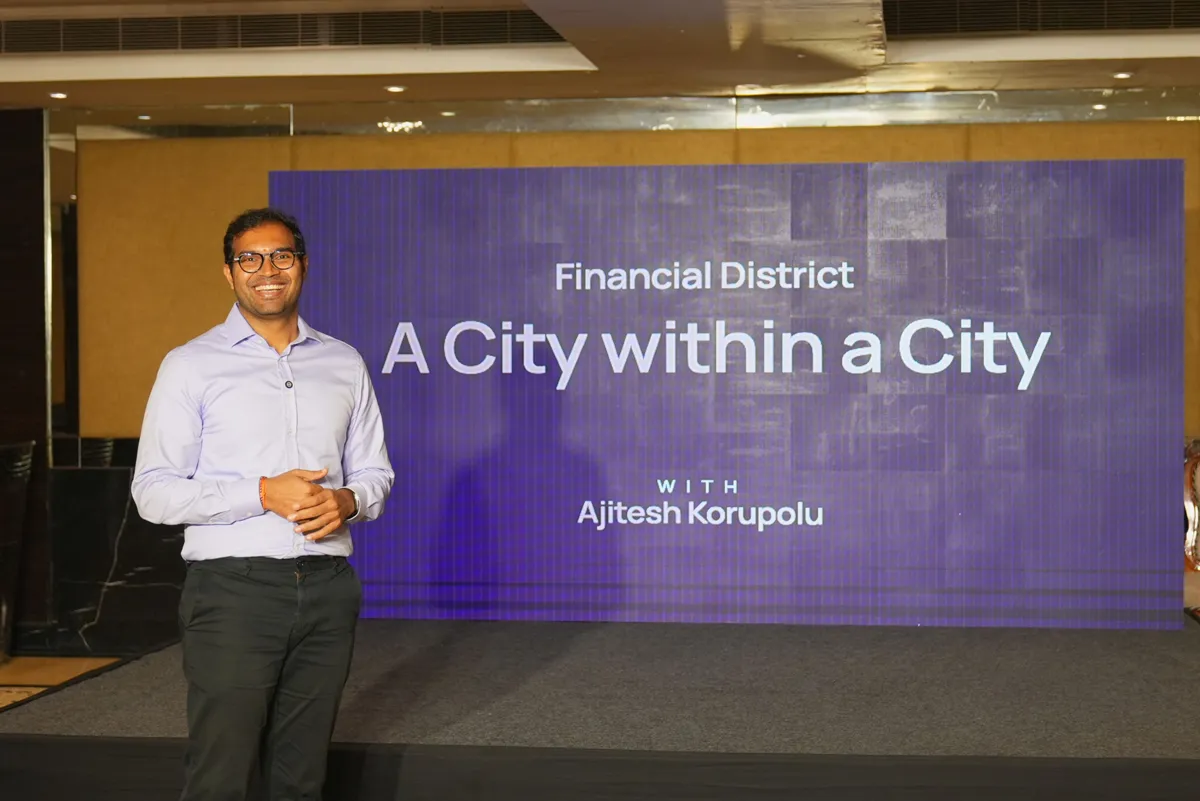The Financial District in Hyderabad is rapidly transforming into more than just a business hub—it is evolving into a “city within a city,” a compact ecosystem where work, home, education, healthcare, and lifestyle coexist seamlessly. This vision was reinforced at a press conference hosted by ASBL, where data and insights highlighted why the Financial District has become one of India’s most resilient and future-ready real estate markets.
Over the past four years, rental appreciation has consistently outpaced the city average, underlining genuine demand. In FY 2024–25 alone, 3BHK rentals rose by 25.7 per cent, pushing yields to 4–6 per cent in many gated communities, compared to Hyderabad’s typical 2–3 per cent. Crucially, this demand is not speculative, but end-user driven, led by mid-to-senior-level professionals employed with global corporations and GCCs.
The district continues to attract large-scale investments from marquee companies. Google’s 3.3 million sq. ft. campus, set to employ ~26,000 people, along with expansions by Microsoft, Amazon, Apple, TCS, and Qualcomm, underlines the scale of corporate confidence. In H1 2025, Hyderabad accounted for 21 per cent of India’s total tech leasing, much of it concentrated in the Financial District.
With 90,000–100,000 new jobs expected in the next two to three years, the housing demand base is set to deepen further. This growth is supported by infrastructure upgrades such as Metro Phase II and improved ORR connectivity to the airport, along with robust social infrastructure including international schools, multispecialty hospitals, curated retail, and leisure hubs.
The defining feature of the Financial District, however, is its walk-to-work ecosystem. Unlike many Indian markets where residential and office spaces are miles apart, here they are integrated. Professionals often live within a short walk of their offices, reclaiming valuable family time while reducing attrition for employers. This compact integration mirrors global benchmarks such as Tokyo’s Marunouchi or Singapore’s Marina Bay.
For investors, the district offers structural advantages that make it a safer long-term bet. Experts pointed out that a 1,700 sq. ft. 3BHK and a 2,000 sq. ft. 3BHK often fetch nearly identical rentals, yet the smaller unit requires lower capital investment—delivering better ROI. Such insights demonstrate why now is the right time for smart, efficiency-driven investments in this market.
While surrounding micro-markets like Kokapet, Tellapur, and Narsingi are growing quickly, much of their momentum is derivative, fuelled by proximity to the Financial District. The district itself remains self-sustaining, with institutional absorption, job density, and infrastructure already in place.
Take ASBL Loft as an example. The decision to go with a 3BHK configuration at Loft wasn’t random. Most buyers in this area are nuclear families, young IT couples with one or two children who want a home close to their office. For them, 3BHK is the sweet spot. So we built for that need. When demand already exists, sales follow naturally.
The same thinking applies to someone investing today. Find markets that align with your budget. Invest in products that already have demand. Be mindful of timing and identify micro-markets where growth and infrastructure can support appreciation. This approach will ensure good and stable returns over time. But if you want to go a step further, try to spot those hidden efficiency pockets. Take the Financial District as an example: most people assume bigger units give better returns. But in reality, a 1,700 sq. ft. 3BHK and a 2,000 sq. ft. 3BHK unit fetch nearly the same rent. The smaller unit comes at a lower entry cost yet delivers similar income. That difference—that efficiency of capital—is your secret ROI.
Commenting on the outlook, Ajitesh Korupolu, Founder & CEO of ASBL, said, “The Financial District has crossed the threshold of being just an office corridor. It is now Hyderabad’s most complete urban ecosystem—a true city within a city. With jobs, infrastructure, and lifestyle converging, the opportunity here is not short-term speculation but long-term structural value. For both residents and investors, this is where Hyderabad’s future is being written.”
The event concluded with an interactive media session that underscored how integrated, design-led ecosystems like the Financial District will define the next phase of urban growth in India.




















